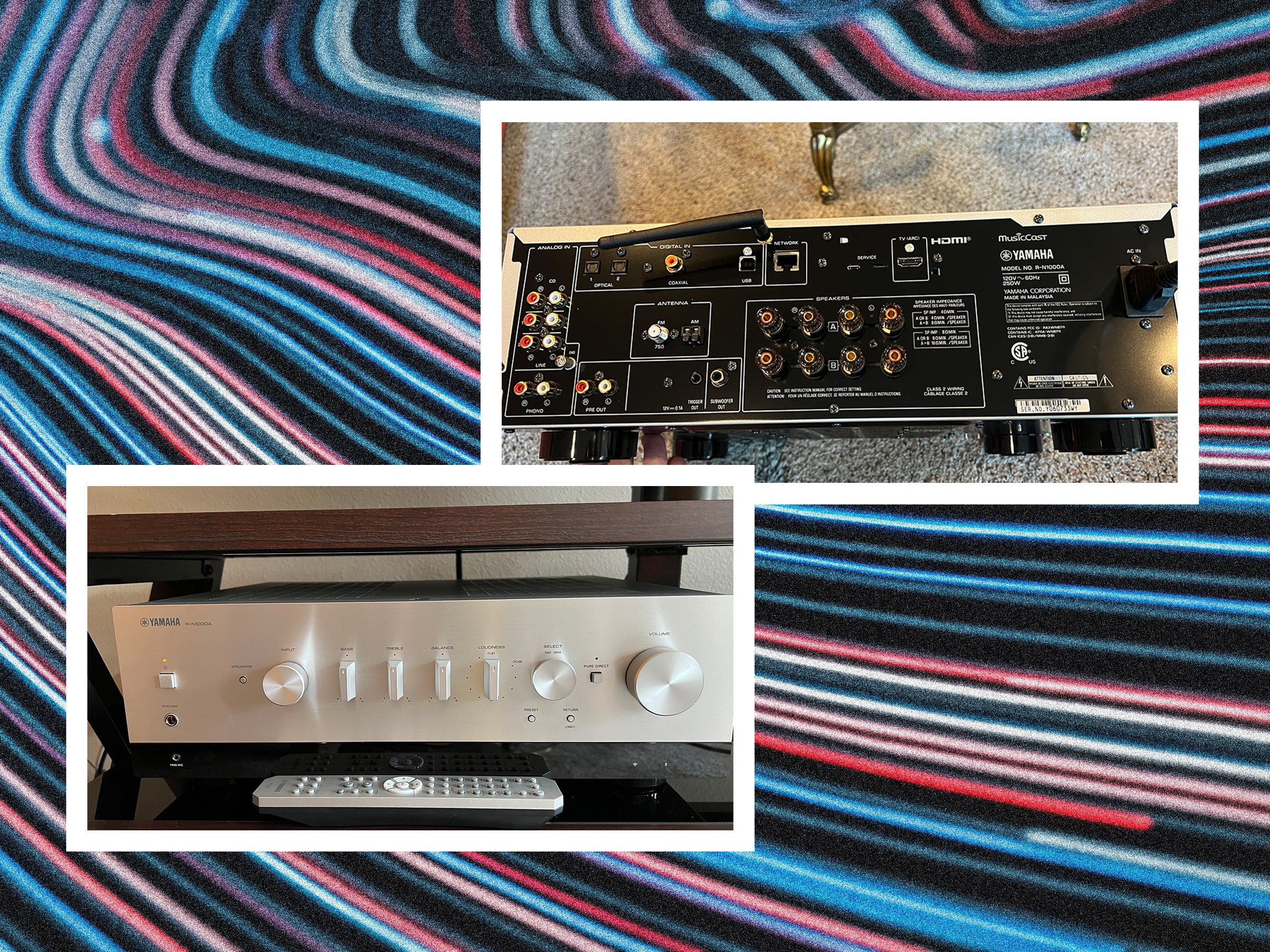It’s a great time to double down on stereo sound. Multi-speaker formats like Dolby Atmos get all the headlines, but if you’re building an all-in-one stereo or 2.1 system to elevate everything from your turntable to your TV, there have never been more options.
With stereo streaming amplifiers and receivers popping up all over the audio sphere (not to mention tons of powered bookshelf speakers), it can be tough to know where to start. The R-N1000A makes things easy. Sitting a step below Yamaha’s flagship R-N2000A, the R-N1000A is pricey yet approachable, with a hardy mix of versatile connectivity, superb performance, and rocksteady usability.
You might expect any legacy audio brand to provide consistent performance across inputs in the streaming era, but as our extensive testing has borne out, juxtaposing traditional audiophile components with conveniences like Wi-Fi and HDMI ARC is no cakewalk. The N1000A proves you can have it all in one box, showcasing uncommon stability in a powerful and downright fun package tailor-made for the modern stereo era.
Old School, New Curriculum
Pulling the hulking yet sleek R-N1000A from its packaging, my first question was, where is the display on this thing? Don’t get me wrong, I love the receiver’s sparkling front face with its tactile selector knobs, especially in the silver model I reviewed, but even the coolest retro design demands modern concessions.
It wasn’t until I fired the unit up that I realized the demure black strip along its base is the display, offering a small but legible guide for source, volume levels, and other settings. It’s not as handy or as versatile as the large screens on pricier streaming amplifiers like Rotel’s RA-5000 (7/10, WIRED Recommends) or Naim’s Uniti Atom (8/10, WIRED Recommends), but it gets the job done without disturbing the vintage aesthetic. It helps that Yamaha’s MusicCast app, necessary for Wi-Fi setup, displays conveniences like album art and digital file resolution.
Photograph: Ryan Waniata
Style aside, the R-N1000A is crafted with performance in mind. It utilizes Yamaha’s TopART (Total Purity Audio Reproduction Tech) design, with a “meticulously symmetrical left/right circuit layout” and “special resin” to block vibrations. A double-bottom chassis with a 1-mm iron damping plate and anti-resonance feet further dull unwanted noises. The unit’s vented frame weighs a healthy 27 pounds and stands 6 inches tall, over 17 inches across, and 15.5 inches deep, so you’ll need plenty of console space.
While the R-N1000A doesn’t get the giant toroidal transformer found in the R-N2000A (and other pricier rivals), its capable custom transformer and block capacitors provide potent A/B amplification at a claimed 100 watts per channel of continuous power at 8 ohms and 140 watts at peak power. Yamaha doesn’t publish continuous power specs at 4 ohms but claims 220 watts per channel of peak power. A 384-kHz/32-bit SABRE ES9090Q DAC provides topline high-resolution digital transference for hi-res sources with support for WAV and FLAC files up to 384 kHz and DSD files at up to 11.2 MHz.
Locked and Loaded
Even with stereo network receivers and amplifiers seeming to spring up autonomously, you’ll have a hard time finding one with better connectivity than the R-N1000A. The back panel is loaded with three dedicated digital inputs (two digital, one coaxial), USB-B connection, AM and FM tuners, three RCA line inputs (one for a CD player), HDMI ARC for your TV, a subwoofer output, Ethernet, and stereo pre-outs for a second amplifier. There’s also a solid phono input, though I actually preferred my Orbit Theory’s built-in pre-amp. Up front is a quarter-inch headphone out.
A handy second speaker zone set below the gold-plated A-zone stereo terminals allows you to connect two pairs simultaneously, designated for 8-ohms only. One other note on impedance: If you’re connecting a single pair of 4- or 6-ohm speakers as I did, Yamaha recommends you navigate to Advanced Setup and change the impedance. It’s a minor pain, but takes just seconds.
If you have other MusicCast devices, you can create additional playback zones from any connected sound source wirelessly in the app. There you’ll also find loads of built-in streaming services, including internet radio stations, Pandora, Amazon Music, Deezer, and Sirius XM, among others. The wireless suite finishes with AirPlay 2 and Bluetooth 4.2 in a pinch. Chromecast is notably missing, though with so many supported services, including both Spotfy Connect and Tidal Connect, Android users should be in good shape. The receiver is also “Roon Tested” for Roon’s dedicated server system.






